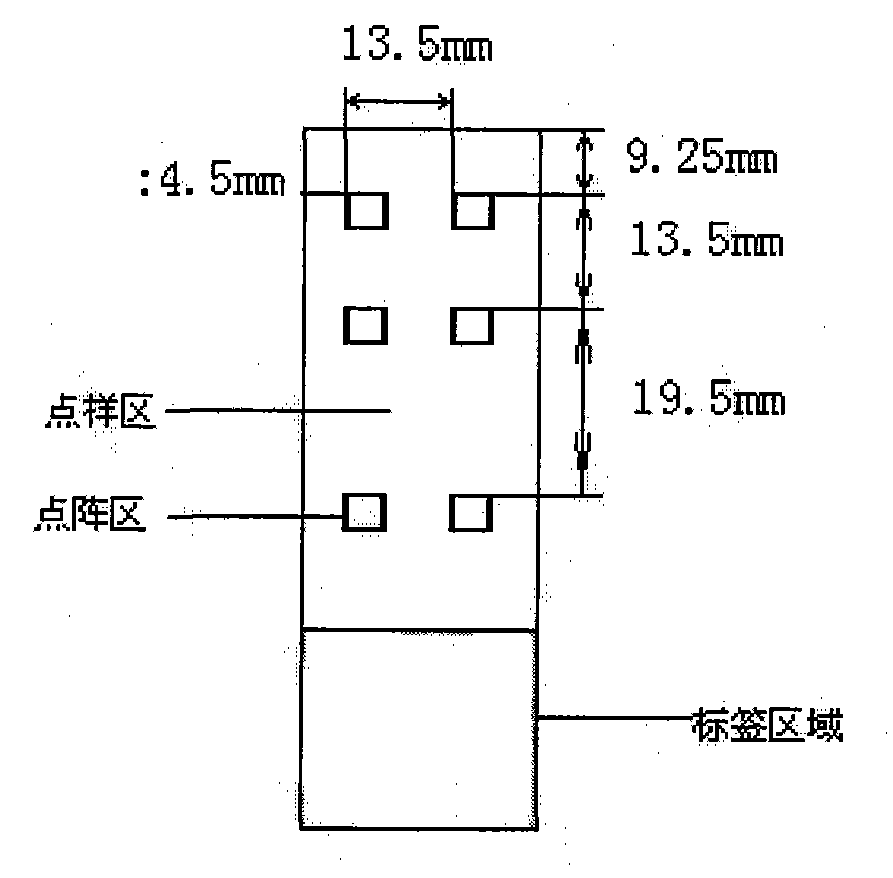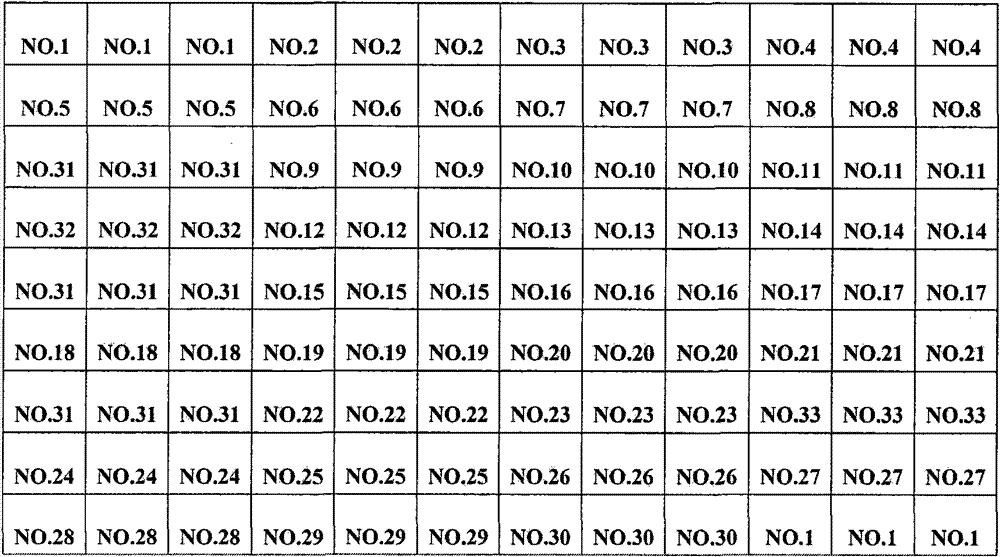Gene chip and kit for detecting common pathogenic bacteria in food
A gene chip and pathogenic bacteria technology, applied in the field of gene chips and kits for detecting seven common pathogenic bacteria in food, can solve the problems of time-consuming, cumbersome, low detection sensitivity, etc., and achieve simple operation, strong repeatability, The effect of high accuracy
- Summary
- Abstract
- Description
- Claims
- Application Information
AI Technical Summary
Problems solved by technology
Method used
Image
Examples
Embodiment 1
[0039] Design and preparation of embodiment 1 probe
[0040] 1. Sequence acquisition:
[0041](1) Acquisition of the invA gene sequence: the entire invA gene sequence of Salmonella was downloaded from the GenBank public database.
[0042] (2) Acquisition of the speB gene sequence: the entire speB gene sequence of Streptococcus pyogenes was downloaded from the GenBank public database.
[0043] (3) Acquisition of the zpx gene sequence: the entire zpx gene sequence of Enterobacter sakazakii was downloaded from the GenBank public database.
[0044] (4) Acquisition of the toxR gene sequence: the entire toxR gene sequence of Vibrio parahaemolyticus was downloaded from the GenBank public database.
[0045] (5) Acquisition of the 16s-23s region gene sequence: the entire 16s-23s region gene sequence of Klebsiella pneumoniae was downloaded from the GenBank public database.
[0046] (6) Acquisition of ipaH gene sequence: the entire ipaH gene sequence of Enterobacter sakazakii was do...
Embodiment 2
[0061] Example 2 Design and preparation of primers
[0062] 1. Sequence acquisition: the same as the sequence of the designed probe.
[0063] 2. Design primers:
[0064] (1) Design of primers for amplifying the specific gene sequence: compare the above-mentioned specific gene sequence downloaded from the GenBank public database with the sequence comparison software Glustal X, find the conserved segment of the gene, and import the conserved segment into the primer design software In Primer Premier 5.0 software, the corresponding parameters are set as follows: Search For: PCR Primers, Search types: Both. Search Ranges: Sense Primer 1 to 672, Anti-sense Primer 1 to 672, PCR Product Size: 100bp to 1000bp. Primer Length: 20bp±2bp. Search Mode: Automatic. Select T from the output m A primer with a value of 50°C±5°C, a length of 17bp±2bp, Hairpin: NONE, Dimer: NONE, False Priming: NONE, Cross Dimer: NONE, and a probe sequence.
[0065] (2) Design of primers for amplifying 16SDN...
Embodiment 3
[0073] Example 3 Gene Chip Preparation——Chip Spotting
[0074] 1. Dissolving probes: the probes synthesized in Example 1 were respectively dissolved in 50% DMSO solution, and diluted so that the final concentration of the probes reached 1 μg / ml.
[0075] 2. Adding plate: Add the dissolved probe to the corresponding position of the 384-well plate, 10 μl per well.
[0076] 3. Spotting: as figure 1 The shown 57.5mm×25.5mm×1mm (length×width×height) clean aldehydated glass slide is placed on the stage of the chip spotting instrument (Spotarray 72), and the control software of SpotArray is used to run the program, according to figure 2The arrangement shown is spotted on the aldehylated glass slide in the spotting area of 4.5mm×4.5mm to form a medium-low density DNA micro-array, and the array arrangement rules in the six dot matrix areas on the glass slide are the same. The size of the dot matrix area is 3mm×2.25mm, the dot pitch in the dot matrix is 250μm, the matrix: 12×9...
PUM
 Login to View More
Login to View More Abstract
Description
Claims
Application Information
 Login to View More
Login to View More - R&D
- Intellectual Property
- Life Sciences
- Materials
- Tech Scout
- Unparalleled Data Quality
- Higher Quality Content
- 60% Fewer Hallucinations
Browse by: Latest US Patents, China's latest patents, Technical Efficacy Thesaurus, Application Domain, Technology Topic, Popular Technical Reports.
© 2025 PatSnap. All rights reserved.Legal|Privacy policy|Modern Slavery Act Transparency Statement|Sitemap|About US| Contact US: help@patsnap.com



